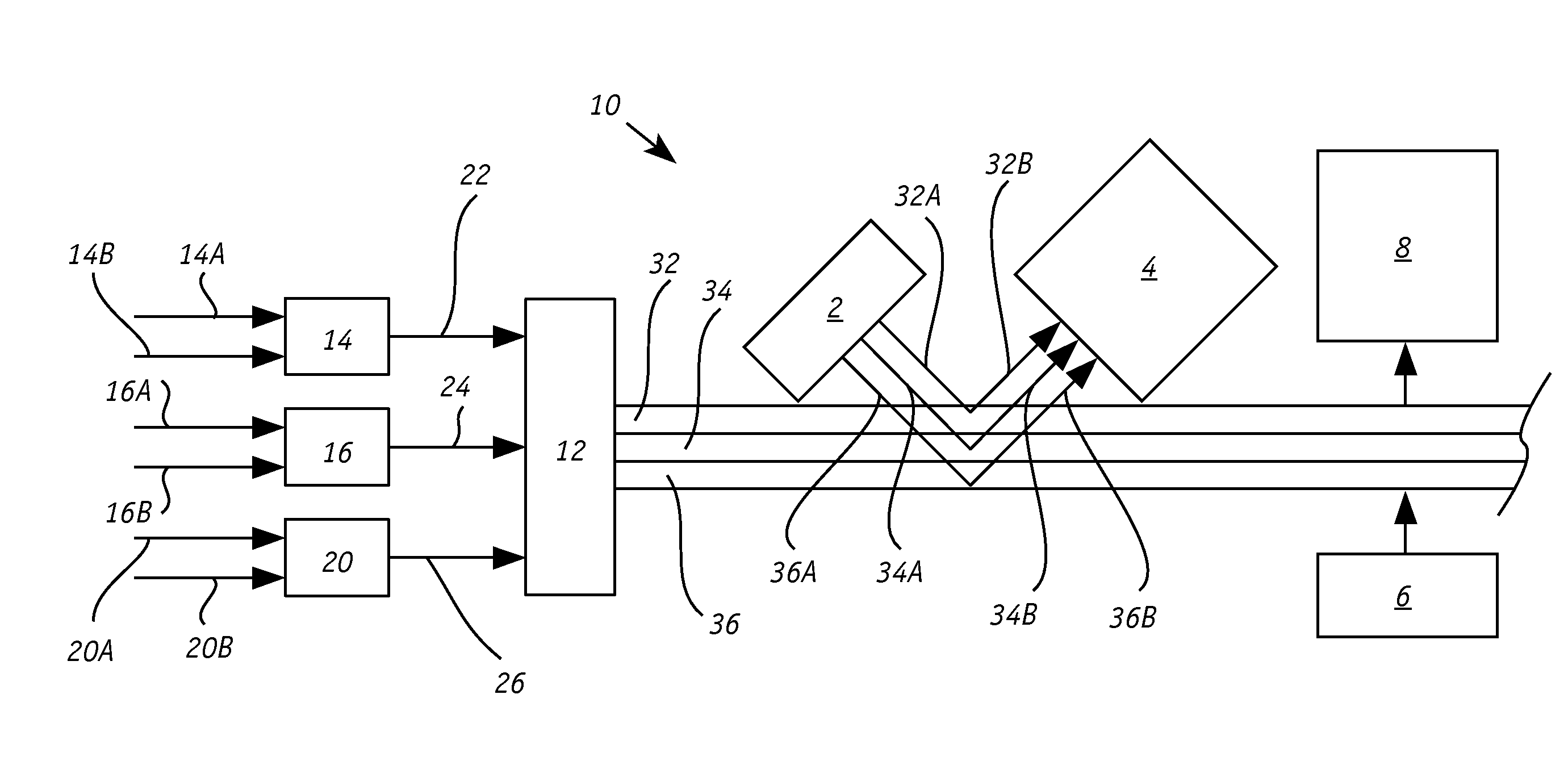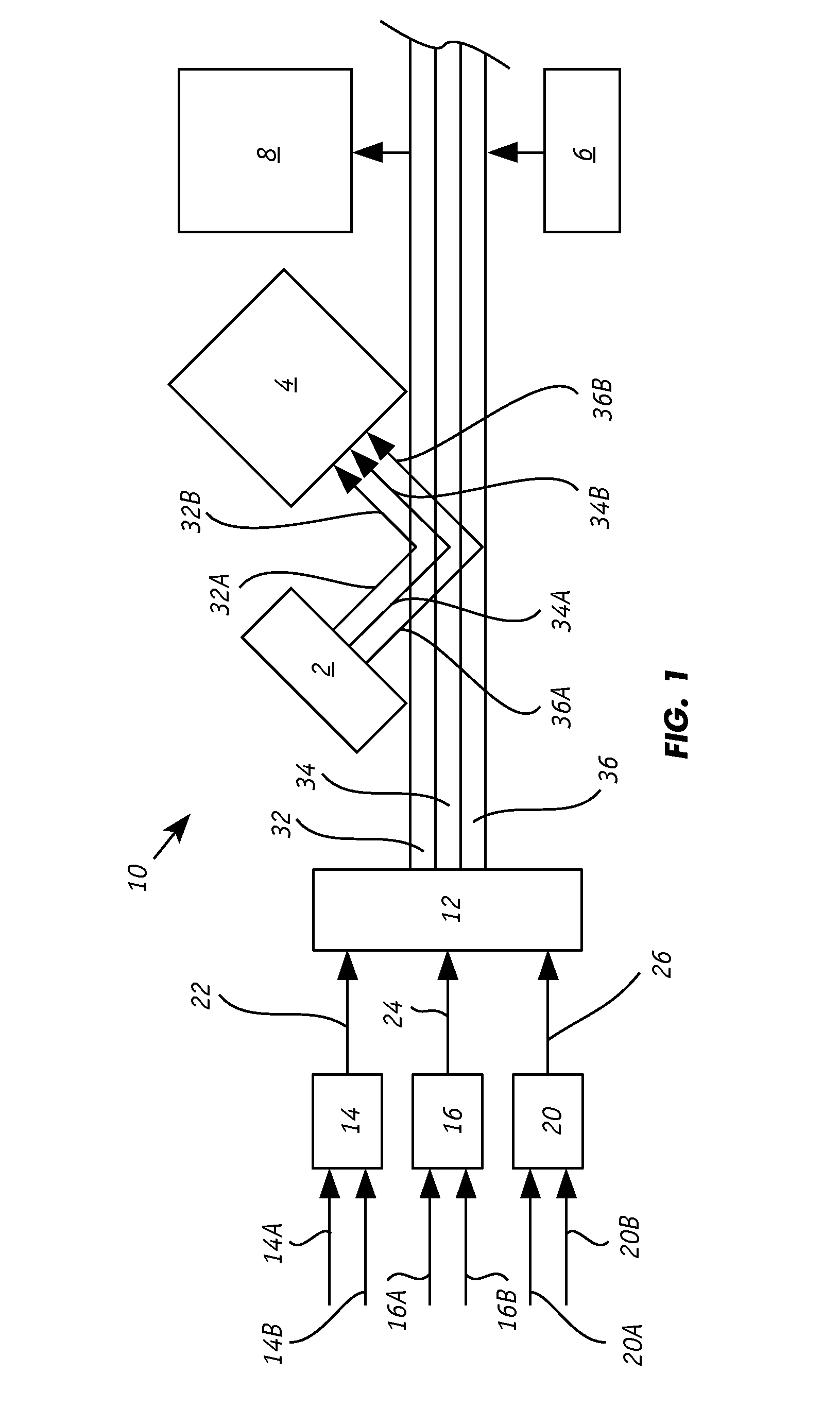Use of fluorescent nanoparticles to measure individual layer thicknesses or composition in multi-layer films and to calibrate secondary measurement devices
a technology of fluorescent nanoparticles and multi-layer films, which is applied in the direction of fluorescence/phosphorescence, optical radiation measurement, luminescent dosimeters, etc., can solve the problems of difficult detection of more than three dyes, less reliable and accurate quantitative measurements, etc., and achieve unique optical emission properties
- Summary
- Abstract
- Description
- Claims
- Application Information
AI Technical Summary
Benefits of technology
Problems solved by technology
Method used
Image
Examples
Embodiment Construction
[0032]The present invention relates to a process for measuring physical properties of a composition, especially material that is in the form of a multilayer film, web or sheet, by incorporating fluorescent nanoparticles into the composition. While the technique will be illustrated in analyzing multilayer plastic films, it is understood that it can be employed to determine the physical characteristics for a number of different materials including, for example, paper, coated materials, fabrics, and the like.
[0033]Fluorescent nanoparticles refer generally to semiconductive particles that exhibit fluorescence when exited by an external excitation source and that have a diameter in the range of about 1 nm to about 1000 nm, preferably in the range of about 5 nm to about 200 nm, more preferably in the range of about 10 nm to about 100 nm. Preferred fluorescent nanoparticles include three-dimensional fluorescent semiconductive nanocrystals or quantum dots which consists of crystalline semic...
PUM
| Property | Measurement | Unit |
|---|---|---|
| diameter | aaaaa | aaaaa |
| diameter | aaaaa | aaaaa |
| diameter | aaaaa | aaaaa |
Abstract
Description
Claims
Application Information
 Login to View More
Login to View More - R&D
- Intellectual Property
- Life Sciences
- Materials
- Tech Scout
- Unparalleled Data Quality
- Higher Quality Content
- 60% Fewer Hallucinations
Browse by: Latest US Patents, China's latest patents, Technical Efficacy Thesaurus, Application Domain, Technology Topic, Popular Technical Reports.
© 2025 PatSnap. All rights reserved.Legal|Privacy policy|Modern Slavery Act Transparency Statement|Sitemap|About US| Contact US: help@patsnap.com



